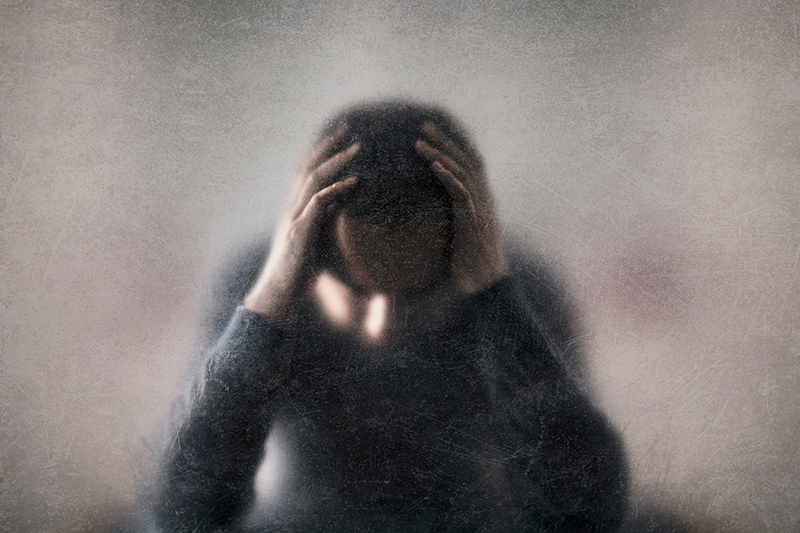Every year in early December, the UN holds its 16 Days of Activism against Gender-Based Violence. The issue is one that can affect everyone regardless of their sex, gender or gender identity.
Helping male victims of intimate partner abuse will also address violence against women and girls by breaking the cycle of violence.
However, men who experience violence, and efforts to prevent violence against men and boys, are conspicuously lacking from the gender-based violence discussion. Despite solid evidence of men’s experiences of violent victimization in Canada, the US and elsewhere, services for them are virtually non-existent.
I have been studying men’s intimate partner victimization and domestic violence more generally for over 15 years. I believe that helping male victims of intimate partner abuse will also address violence against women and girls by breaking the cycle of violence, and will benefit society as a whole.
Men as victims of intimate partner violence
Men are over-represented among victims of homicide and suicide. Research on intimate partner violence – recently highlighted by the Johnny Depp v. Amber Heard case – suggests that men can also become victims of female-perpetrated partner violence.
Self-reported population studies – one of the major sources of data on partner violence – identified that one in five men (19.3%) in North America and western Europe experience physical violence in an intimate relationship annually.
In Canada, about 655,000 men reported having experienced physical victimization in intimate relationships between 2004 and 2014. Moreover, about 64,000 of these men experienced the most severe type of partner abuse characterized by repeated and severe physical and psychological violence with a high probability of injuries and negative emotional effects.
Despite under-reporting, police data identified concerning trends of family violence for male victims. Between 2009 and 2021, the rates of police-reported family violence in Canada decreased by 5% for women and girls, but increased by 4% for men and boys.
A US study found that people in same-sex relationships can experience higher levels of domestic violence. Just over half (55%) of police-reported same-sex partner violence in Canada involved male partners. These individuals may face special barriers when it comes to discussing their experiences or seeking help.
We are also learning that men are at a higher risk of experiencing legal and administrative abuse in the intimate relationships, including false accusations of abuse. A 2020 survey found that 11% of American men reported being falsely accused of domestic violence or other forms of abuse.
The second major source of data – police-reported statistics – indicates that women are more likely to experience the most severe injurious violence and intimate partner homicide.
Police-reported data also reveals that women and girls make up almost 70% of family-violence victims in Canada.
There are however limitations on police-reported data. For example, about 80% of victims of abuse never report it to the police, and men tend to under-report spousal violence compared to women.
Despite under-reporting, police data identified concerning trends of family violence for male victims. Between 2009 and 2021, the rates of police-reported family violence in Canada decreased by 5% for women and girls, but increased by 4% for men and boys.
Gap in services for men
Like other victims, men require attention and help with recognizing abuse earlier so they can cope with the consequences of abuse more effectively.
An international study I was a part of in 2020 found gender-specific barriers to men seeking help, including not recognizing or calling what happened to them abuse, trying to live up to notions of ‘manliness’ (being a victim may be seen as unmanly), trying to fix the relationship, protecting children, and simply because they had nowhere to go for help.
There is a drastic service gap for male victims of abuse compared to female victims of partner abuse. Among 557 government-funded residential facilities for victims of crime in Canada, only 24 reported being mandated to also serve men in addition to women.
Breaking the cycle of violence
Adults are not the only victims of domestic abuse. Children’s exposure to domestic violence – when children witness a parent assault another parent or partner – is a widespread social problem.
Preventing violence by any partner can help to break the cycle of violence – or what is known as the intergenerational transmission of violence, when children who witness or experience abuse are more likely to engage in violent partner relationships in adulthood.
Around 25% of youth in the US are affected by it in their lifetime. Children of men who are victimized by their female partners often witness the violence and/or experience direct physical and emotional abuse.
Preventing violence by any partner can help to break the cycle of violence – or what is known as the intergenerational transmission of violence, when children who witness or experience abuse are more likely to engage in violent partner relationships in adulthood.
Moreover, boys are much more likely than girls to experience physical childhood abuse, including being kicked, bitten, punched, choked, burned or otherwise attacked. Eliminating this type of abuse could reduce men’s perpetration of violence against women and children in their future relationship.
Many people might think that most intimate partner violence is perpetrated only by men and directed toward women. However, the most common pattern of abuse is bidirectional violence. That is, violence perpetrated and experienced by both people in a relationship. Around 58% of reported cases of intimate partner violence were bidirectional.
The impact of the bidirectional violence can be very serious, including physical injury and mental health problems for both partners. Recognizing and addressing partner violence that involves mutually violent couples can reduce violence against both men and women.
Helping men means saving lives
Strong evidence suggests that helping male victims of domestic violence can help reduce the likelihood of homicide for both men and women. In the US and Canada, research has shown that when abused women are able to leave violent relationships, like finding refuge in a shelter for abused women, there is a reduction in female-perpetrated homicides.
If abused men had similar opportunities to receive timely help, it could prevent abusive relationships from escalating, and potentially reduce male-perpetrated homicides as well as the deaths of men who are killed by their partners.
It is time to recognize men’s experiences of violence and abuse, not only as perpetrators but also as victims. Engaging men in reducing gender-based violence against women is important, but not enough.
Helping men and boys prevent violence in their own lives and providing them with support to address the consequences of partner abuse is the next important step in eliminating intimate partner violence.
This article first appeared in The Conversation, and is republished under a Creative Commons Licence; you can read the original here.
About the Author
 Dr Alexandra Lysova is a criminology professor at Simon Fraser University in British Columbia, Canada. Dr Lysova studies intimate partner violence, overlapping male and female offending and victimization, and homicide statistics, and is involved in several international projects that focus on male victims of intimate partner violence. She received her Doctor of Sciences degree in Sociology from the Russian Academy of Sciences in Saint Petersburg, and her PhD in Criminology from the University of Toronto.
Dr Alexandra Lysova is a criminology professor at Simon Fraser University in British Columbia, Canada. Dr Lysova studies intimate partner violence, overlapping male and female offending and victimization, and homicide statistics, and is involved in several international projects that focus on male victims of intimate partner violence. She received her Doctor of Sciences degree in Sociology from the Russian Academy of Sciences in Saint Petersburg, and her PhD in Criminology from the University of Toronto.
Picture © Jakub Krechowicz / Shutterstock


